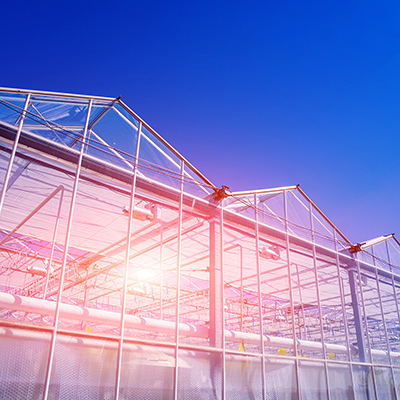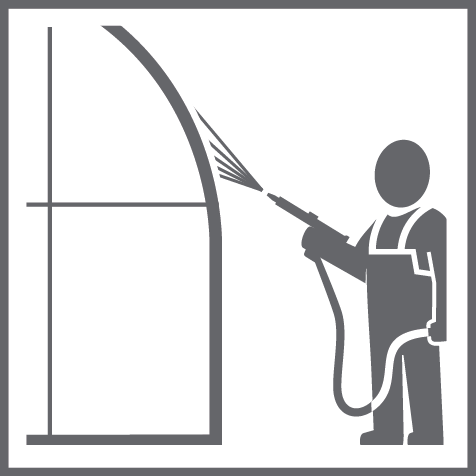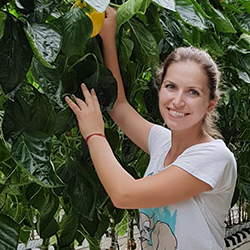Better bud construction
“From mid-April to the end of July, there is normally sufficient sunlight for the cultivation of alstroemerias. For bud formation, it is better to shield to the excess light with a coating on the greenhouse roof,” says Siem Knol, who has thirty years of experience with alstroemeria cultivation. Contractor Wessel de Vries installed the removable greenhouse coating OptiFuse IR on the glass surface in mid-April.
OptiFuse IR scatters the incident sum
Optifuse IR scatters the incoming sunlight, is heat-resistant and has a high permeability to grow light. This promotes the photosynthesis and transpiration of all plant leaves, which leads to improvement of the humidity, the temperature and the CO2 level in the greenhouse. The alstroemeria grower: “Because of the coating, it gets 1 to 2 degrees less hot in the greenhouse. And a lower greenhouse temperature gives a lower leaf temperature. In addition, due to the diffuse operation of Optifuse IR, more light comes into the bottom of the crop. All this ensures more photosynthesis, better crop growth and good flower production. “
Flowering
Flower bud formation at alstroemeria occurs about three months before flowering. The flowering induction mainly takes place under the ground. A lower soil temperature results in fewer empty branches and higher branch production of first quality. Siem Knol, the alstroemeria grower: “Because of the coating we had a lower irradiation. This keeps the soil temperature lower, which has had a positive influence on the flower structure. By cooling the ground deeper during the summer, that effect is reinforced. As a result, we had good production until mid-November. Especially in September and October, despite the dark weather, we harvested more stems than the year before. “
The coating was removed with Topclear at the beginning of August. “The outside temperature is still high in August, but we still let the coating get off. Otherwise we had light loss due to the lower sun,” says Knol.
This year
This year, the alstroemerary grower is again planning to apply Optifuse IR on the greenhouse roof in mid-April. “Last year we were very pleased with the coating, especially during the high summer temperatures in the second and third week of June.”









